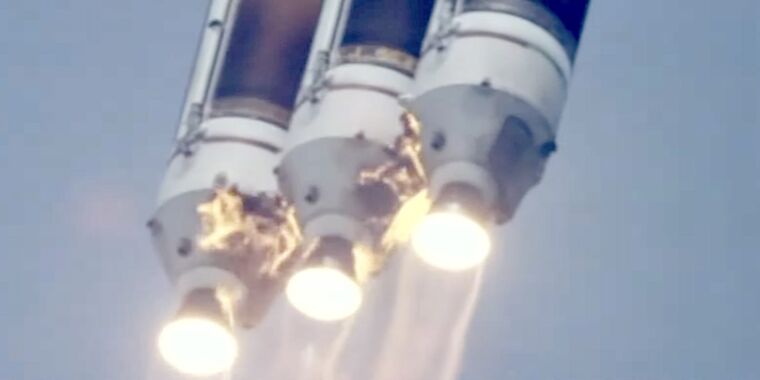United Launch Alliance
United Launch Alliance, more commonly known as ULA, successfully executed the final flight of its renowned Delta IV Heavy rocket on a recent Tuesday from the Cape Canaveral Space Force Station in Florida. The mission entailed deploying a classified spy satellite for the National Reconnaissance Office (NRO), adding another chapter to the rocket’s illustrious history. The Delta IV Heavy, widely recognized as one of the most potent rockets globally, ascended into space for its sixteenth and concluding journey. Notably, this marked the forty-fifth and ultimate flight of a Delta IV launcher, culminating a lineage of 389 missions dating back to 1960.
Challenges and Triumphs
ULA initially aimed to launch this particular rocket on March 28. Nevertheless, the countdown faced an abrupt halt approximately four minutes before liftoff due to nitrogen pump malfunctions at an off-site facility in Cape Canaveral. Nitrogen plays a pivotal role in purging internal components of the Delta IV, crucial for preempting potential fires or explosions during launch sequences. The nitrogen pumps, overseen by Air Liquide, form part of an intricate network designated for dispensing nitrogen to various launch pads within the Florida spaceport. Although these technical disruptions have surfaced previously, including incidents during NASA’s Space Launch System rocket’s inaugural launch campaign in 2022, Air Liquide refrained from responding to queries from Ars.
Subsequently, following the resolution of the nitrogen pump issue, ULA proceeded with the launch attempt on the succeeding Tuesday. Amid a seamless countdown, the Delta IV Heavy gracefully ascended from Cape Canaveral Space Force Station at 12:53 pm EDT (16:53 UTC). The rocket’s three hydrogen-fueled RS-68A engines, engineered by Aerojet Rocketdyne, ignited moments before liftoff, generating over 2 million pounds of propulsive force. A striking hydrogen fireball, characteristic of Delta IV Heavy liftoffs, marked the ignition sequence, searing the lower section of the towering 235-foot (71.6-meter) rocket. Following this fiery display, twelve hold-down bolts liberated the Delta IV Heavy, directing it towards the cosmos with a confidential payload destined for the US government’s spy satellite agency.
Key Stages of the Mission
Veering eastwards from Florida’s Space Coast, the Delta IV Heavy displayed stellar performance during the initial phases of its journey. As the rocket’s ground-based cameras lost sight of the ascending craft, the liquid-fueled side boosters separated around four minutes into the flight, an occurrence captured by onboard video equipment. The core stage engine augmented power for a brief period before disengaging nearly six minutes post-liftoff, thereby permitting the Delta IV upper stage to engage in a series of propulsion maneuvers utilizing its RL10 engine.
At this juncture, ULA opted to discontinue public viewing and audial transmission from the launch control center, adhering to the customary news blackout observed during the conclusive segments of missions involving NRO satellites. With a tentative timeline of firing the upper stage engine several times to establish a circular geostationary orbit exceeding 22,000 miles (almost 36,000 kilometers) above the equator for the undisclosed payload, ULA aims to ensure mission success.
Insights into the Classified Mission
Whilst the specifics of the payload remain officially undisclosed, astute observers have inferred valuable insights concerning the nature of the satellite launched. The employment of a Delta IV Heavy rocket typically signifies the deployment of substantial NRO spy satellites. Eminent satellite tracker Marco Langbroek affirms that the payload aboard this mission likely pertains to an “Advanced Orion” or “Mentor” satellite, characterized by intriguing attributes necessitating the Delta IV Heavy’s unparalleled lift capacity.
The Advanced Orion satellites, equipped with colossal 65-foot-long (19.8-meter) trisector payload fairings and expansive mesh antennas expanding up to 330 feet (100 meters) in diameter, undertake clandestine eavesdropping missions monitoring communications and radio transmissions of interest. These sophisticated assets, detectable as eighth-magnitude celestial entities from Earth, contribute to a global intelligence-gathering web established through previous Delta IV Heavy launches, bolstering the NRO’s strategic surveillance capabilities.
Implications and Future Prospects
United Launch Alliance’s retirement of the Delta IV Heavy heralds the commencement of a new era aligned with the corporate strategy initiated a decade ago. The decision to phase out the Delta IV and Atlas V rockets in favor of the innovative Vulcan rocket represents a leap towards enhanced cost-efficiency and performance scalability. Noteworthy advancements like the successful inaugural launch of the Vulcan rocket in January highlight ULA’s strategic shift towards consolidating its launch capabilities.
In the words of ULA’s launch systems director Bill Cullen, “Everything that Delta has done… is being done better on Vulcan, so this is a great evolutionary step.” The transition to the Vulcan rocket, characterized by superior performance metrics and cost-effectiveness, signifies a poignant yet progressive shift away from the Delta IV era, accentuating ULA’s commitment to pioneering space exploration endeavors amidst an evolving landscape of spacefaring technologies.
Image/Photo credit: source url





